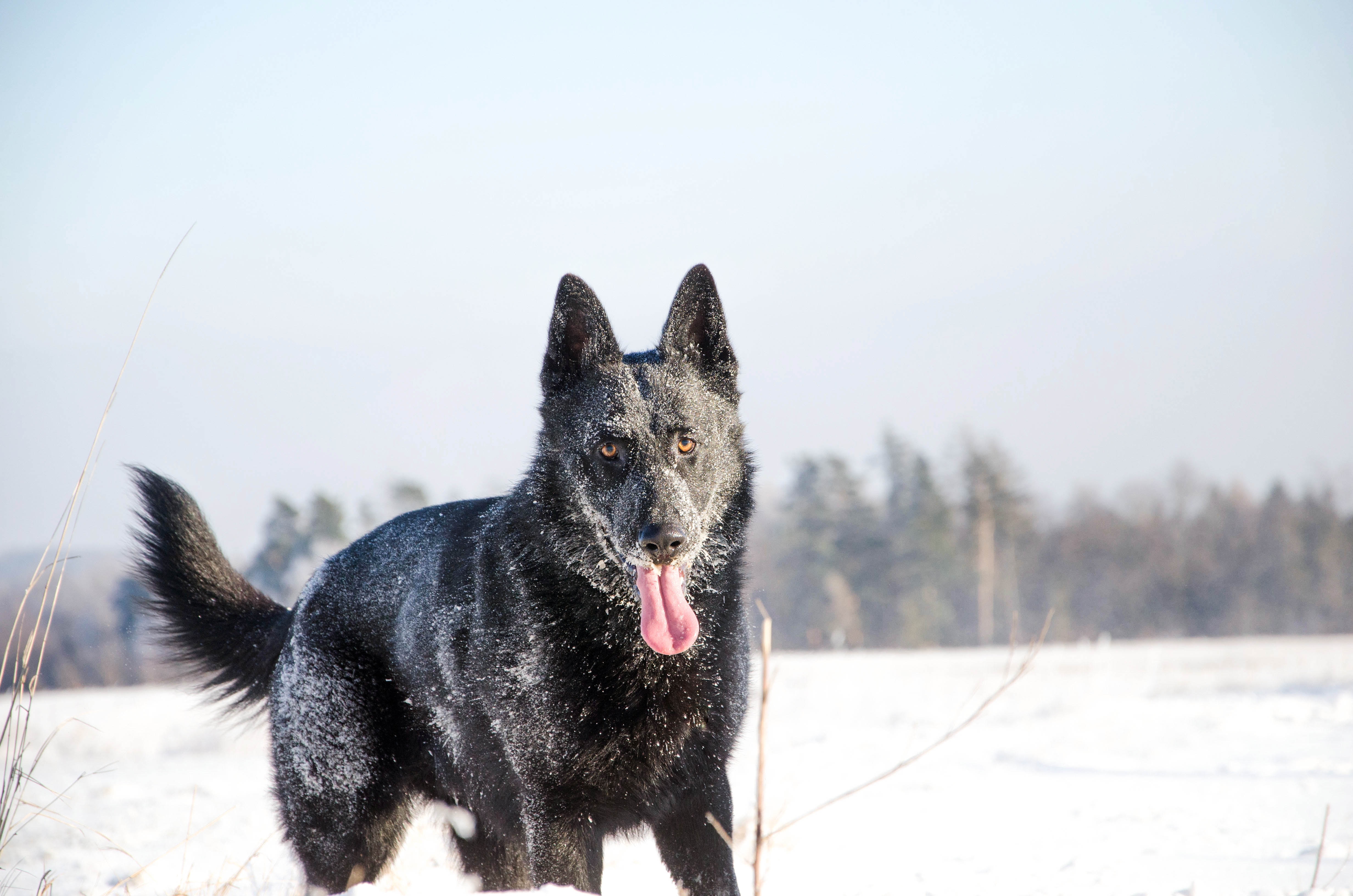What if I told you that there’s a way to make your pet’s behavior more predictable? A way to better avoid unfortunate incidents? A way to communicate better with your non-human family members? There is!
All of this becomes possible when we can proficiently read our pet’s body language. Our pets are communicating with us all of the time through their body language signals and behavior. I’d say that most of us can pick up on big emotional “tones” with our animals. For instance, most people would probably say the dog on the left is “happy” and the dog on the right is “not happy” without knowing the nuts and bolts of dog body language.
 |
 |
| Photo by Kuma Kum on Unsplash | Photo by Daniel Lincoln on Unsplash |
Likewise, “happy” cat on the left and “not happy” cat on the right.
 |
 |
| Photo by Ludemeula Fernandes on Unsplash |
However, if we just leave our understanding at this most basic level we’re missing most of the conversation. It’d be like only learning the tone of voice someone uses instead of learning words and sentences. Their raised voice might be anger or excitement; it can be hard to tell if we don’t know the words. Further study is needed to learn the nuances and subtle differences in communication, like the difference between these two dogs:
 |
 |
| Photo by Anne Dudek on Unsplash | Photo by Sakura on Unsplash |
How can I learn my pet’s body language?
There are three basic skills to being able to proficiently read your pet’s body language:
- Observation: being able to see the signals your pet is displaying
- Knowing the signals: knowing the “words” your pet is using
- Interpretation: understanding how they’re stringing the “words” into “sentences”
Observation is the first step; it doesn’t matter if you know the signals if you can’t see your pet using them! While there are a lot of jokes about observant vs. unobservant people, this too is a skill that can be learned like any other! Here are some tips for beefing up your observation skills:
- Play games! Activities like scavenger hunts, find the difference photos, and even Eye Spy games are great for sharpening your observational skills.
- Observe with all 5 senses. There’s an anxiety-reducing exercise that is great for building observational skills as well: acknowledge 5 things you see, 4 things you touch, 3 things you hear, 2 things you smell, and 1 thing you taste. This will come in handy when we get to the interpretation section.
- Separate observation from interpretation by watching animals you know nothing about. So often we immediately jump to interpretation instead of simply observing what’s going on and taking it at face value. I find it’s easier for my students to do this when they practice watching videos of an animal they’re not familiar with first.
After or alongside building observational skills we can start learning the body language signals. As with anything, there are some great resources and some inaccurate resources on the internet. Here are a few we recommend (check out our recommendations pages as well; we update frequently!):
- Dogs:
- Books (Disclosure: These books are affiliate links. We receive a small commission for purchases made through these links at no extra cost to you. This helps us continue to put out free content to help you and your pets live more harmoniously!):
- YouTube Videos:
- Understanding Dog Body Language by Kristin Crestejo
- Does Your Dog Really Want to be Petted? By Eileen Anderson
- Shut Down Dogs By Eileen Anderson
- Cats:
- YouTube Videos:
- Body Language in Cats by Cats Protection
- 6 Things Your Cat is Saying to You by Jackson Galaxy
- YouTube Videos:
This is by no means an exhaustive list and there are many species missing; email us at info@petharmonytraining.com if you’re looking for resources on a different species! Here are some tips to help you observe your pet’s signals:
- Focus on one body part at a time. For an entire day solely focus on your pet’s ears and nothing else. The next day focus on your pet’s mouth, and so on. Become proficient reading one part then move on to the next.
- Video your pet. Watch and rewatch the video focusing on different body parts and signals. How many do you see when playing it frame by frame vs. at normal speed?
- Practice! Learning another language takes time and practice, plain and simple. The only way to see more signals is to practice frequently.
Interpreting body language signals is not always black and white. A yawn may be a stress signal one minute and related to sleep in another minute. This is where interpretation comes in. We must always remember, though, that our interpretation is just that. It’s not a 100% accurate fact. It’s our best guess as to what the animal is experiencing and we will not really be able to confirm our assumptions with our pets. As such, it’s important that we always make training and behavior modification decisions based on observable behaviors instead of our interpretations.
This step is the hardest because we can’t verify our answer to see if it’s right. This might be a step that you prefer to leave to a professional (which is a great call!) Here are some tips to help you become more proficient at interpreting your pet’s signals if you’d like to do so:
- Stick to simple interpretations like comfortable vs. uncomfortable. The more involved your interpretation the more likely it is to be incorrect.
- Observe your pet’s entire body. Is their body language overall comfortable or uncomfortable? Are you seeing multiple stress signals in a row and/or simultaneously?
- Watch for the cause and effect in your videos. What happens before and after your pet displays certain signals? Remember to observe with all of your senses.
- Watch videos of animals interacting together. One of the best ways to glean conversations in another language is to listen to native speakers! Again, watch for the cause and effect.
- Get a professional’s (or twos or threes) opinion. Professionals have simply watched a whole lot of animals and that helps build a mental database that we can reference against, so to speak. That doesn’t mean we don’t get it wrong too. We just have more experience observing different individuals.
Now what?
- Identify which step you should start with: observation, learning the signals, or interpretation.
- Build the habit into your day. Devote at least a few minutes each day to becoming fluent in your pet’s language.
- Try the above steps and do some research on your own. Get your friends and family involved so you can practice with them, too!
- Move on to the next phase when you feel confident in the one you’re currently on.
- Check out our Setting Yourself Up for Success: Behavior Modification Basics course for more info on canine body language.
- Reach out to a professional for help. Pet Harmony routinely offers body language seminars in person and if you ask us nicely at info@petharmonytraining.com we’ll consider a webinar sooner rather than later for y’all 😉
Happy training!
Allie


